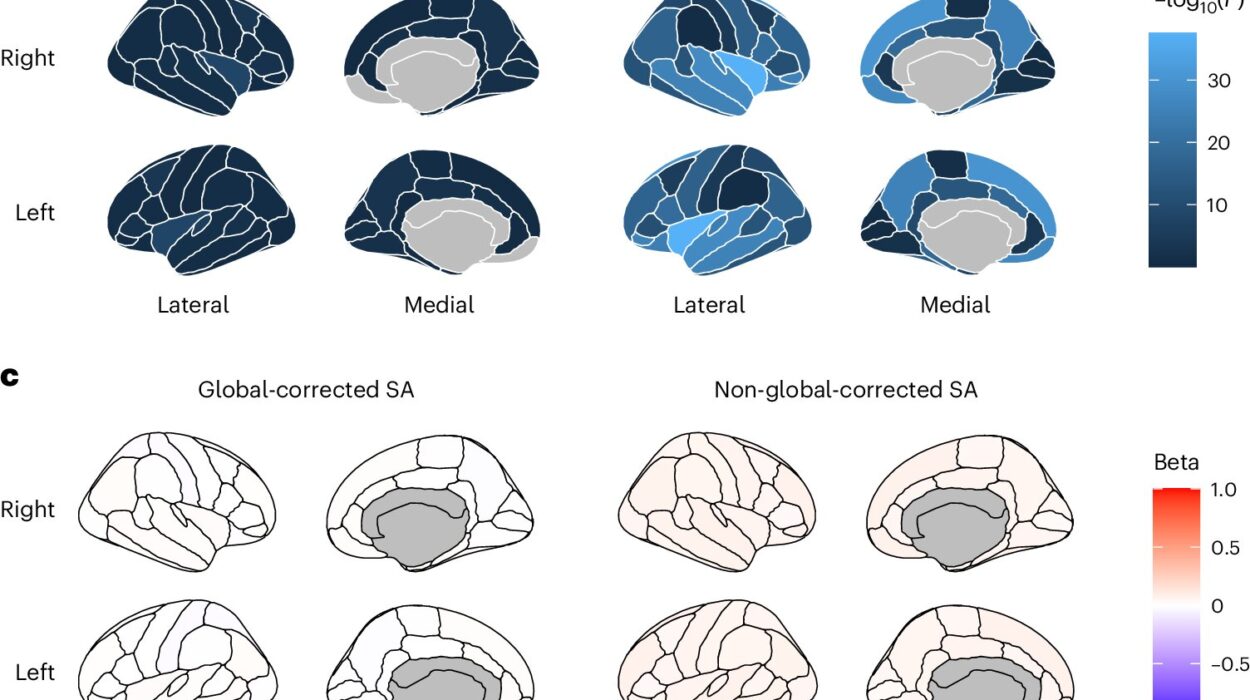Each night, as we drift into the quiet embrace of sleep, something extraordinary unfolds within the silent chambers of the brain. From the outside, sleep appears as an absence—an intermission in the theater of waking life. But beneath the closed eyelids and slowed breath, a silent architect is at work. The sleeping brain reshapes our mental architecture, strengthening the scaffolding of memories, pruning away unnecessary details, and weaving together fragments of experience into coherent narratives. This process, known as memory consolidation, is one of nature’s most intricate feats of neurobiology, and sleep is its indispensable stage.
For centuries, philosophers and scientists puzzled over the purpose of sleep. Was it merely rest for a fatigued body, or did it serve deeper, hidden functions? Today, neuroscience reveals that sleep is not passive. It is an active, dynamic state that determines what we remember and what we forget, influencing not only our academic learning but our emotional resilience, decision-making, and sense of identity.
The Landscape of Memory
To understand why sleep is so critical to memory, we must first explore what memory truly is. Memory is not a fixed recording of events but a living, evolving system. It can be divided into stages: encoding, when we first perceive and register information; storage, where information is maintained over time; and retrieval, when memories are accessed for use. But these stages are not linear. Memories begin fragile, like impressions in wet clay, easily altered or erased. They only achieve durability through consolidation—a process where the brain replays, reorganizes, and strengthens neural connections.
There are different types of memory, each relying on distinct brain regions and networks. Declarative memory encompasses facts and events—our knowledge of history, language, and personal experiences. Procedural memory stores skills, like riding a bicycle or playing the piano. Emotional memory shapes how we respond to future events, coloring our lives with joy, fear, or sadness. All of these depend, to varying degrees, on the interplay between sleep and neural activity.
The Two Pillars of Sleep
Sleep is not uniform. It cycles through two major states: Non-Rapid Eye Movement (NREM) sleep and Rapid Eye Movement (REM) sleep. NREM itself is divided into light and deep stages, the latter also called slow-wave sleep (SWS) for its characteristic brainwave patterns. REM sleep, in contrast, is marked by rapid eye movements, vivid dreaming, and heightened brain activity resembling wakefulness.
Both NREM and REM are vital to memory, but they serve different functions. NREM slow-wave sleep is often associated with the stabilization of declarative memories—facts, concepts, and spatial relationships. REM sleep, on the other hand, is linked to the integration of memories, blending them with prior knowledge, enhancing creativity, and consolidating emotional learning. The nightly alternation of these phases creates a rhythmic dialogue between different brain regions, particularly the hippocampus and the neocortex.
The Hippocampus as a Temporary Library
In the waking state, the hippocampus acts as a temporary library for new experiences. It rapidly encodes information, like a camera capturing snapshots of events. Yet this storage is transient and capacity-limited. For a memory to endure, it must be transferred to the neocortex, the brain’s long-term storage network.
This transfer largely occurs during NREM slow-wave sleep. As we sleep, the hippocampus replays recent experiences in patterns of neural activity, much like a rehearsal. This replay sends information to the neocortex, where it becomes integrated into existing knowledge structures. The hippocampus, now free of the burden of temporary storage, is ready to record new memories upon waking.
The Symphony of Brainwaves
During slow-wave sleep, the brain engages in a carefully orchestrated symphony of electrical patterns. Slow oscillations in the neocortex provide the overarching rhythm, while sleep spindles—bursts of activity generated in the thalamus—serve as messengers, facilitating communication between the hippocampus and cortex. Sharp-wave ripples in the hippocampus replay the day’s encoded memories. These events are precisely timed so that ripples occur during the upstates of slow oscillations, allowing memory traces to be transferred and strengthened.
The harmony of these rhythms is not accidental. Disruption of this timing—whether through sleep deprivation, fragmented sleep, or certain neurological disorders—can impair consolidation. This is why even short-term sleep loss can lead to noticeable declines in learning and recall.
REM Sleep and the Integration of Experience
If slow-wave sleep is the archivist, carefully filing away facts, REM sleep is the artist, weaving disparate memories into creative wholes. During REM, the brain’s limbic system, which governs emotion, is highly active, while the prefrontal cortex, responsible for logical reasoning, is relatively quiet. This state fosters novel connections between seemingly unrelated pieces of information, a process that fuels insight and creativity.
REM sleep is also a critical period for emotional memory processing. Stressful or traumatic experiences are replayed in a neurochemical environment distinct from wakefulness—one low in stress-related neurotransmitters like norepinephrine. This “safe space” allows the brain to reframe emotional memories, reducing their intensity while preserving their informational value. This may explain why a good night’s sleep can make problems seem more manageable.
Sleep Deprivation and the Fragility of Memory
When sleep is cut short or disrupted, the consequences for memory can be severe. Studies consistently show that learning followed by sleep results in better retention than learning followed by an equal period of wakefulness. Sleep deprivation, especially when it encroaches on slow-wave or REM stages, leaves memories unstable and prone to decay.
In the hippocampus, sleep loss reduces the replay of recent experiences, impairing the transfer to the cortex. In the cortex, the lack of coordinated slow oscillations and spindles diminishes the strengthening of synaptic connections. The result is not only poor recall but also a diminished ability to learn new information the next day. In essence, without sleep, the brain’s hard drive cannot properly save files, and its working memory becomes overloaded.
Developmental Perspectives
The link between sleep and memory is particularly striking in children and adolescents. Their brains are in a constant state of learning and reorganization, and they spend a greater proportion of sleep in slow-wave stages than adults. This abundance of deep sleep supports the rapid acquisition of language, motor skills, and social understanding.
In older adults, changes in sleep architecture—such as reduced slow-wave sleep and increased fragmentation—are associated with declines in memory performance. Some research suggests that enhancing slow-wave activity in the elderly, through auditory or electrical stimulation during sleep, can improve memory consolidation, offering potential therapeutic avenues.
Sleep and Memory in the Emotional Brain
Beyond academic learning, sleep plays a vital role in shaping our emotional memories. The amygdala, the brain’s emotional sentinel, interacts closely with the hippocampus during both encoding and consolidation. Emotional events are more likely to be remembered than neutral ones, but this selectivity depends on sleep.
Sleep allows the emotional charge of memories to be modulated. While the factual content remains intact, the emotional intensity often decreases after a night’s rest. This is particularly important for mental health. In conditions like post-traumatic stress disorder (PTSD), disruptions in REM sleep can lead to the persistence of overwhelming emotional responses, trapping the sufferer in a cycle of intrusive memories.
The Molecular Underpinnings
At the cellular level, memory consolidation involves synaptic plasticity—the ability of synapses to strengthen or weaken over time. Sleep influences this plasticity through multiple pathways. During slow-wave sleep, there is evidence for synaptic downscaling: a global reduction in synaptic strength that maintains cellular homeostasis while preserving the most important connections. This pruning enhances signal-to-noise ratios, making relevant memories more accessible.
Neurochemically, sleep is characterized by fluctuations in acetylcholine, serotonin, and norepinephrine levels, each influencing memory processes differently. Low acetylcholine during NREM supports the transfer of information from the hippocampus to the cortex, while high acetylcholine during REM promotes the reorganization of cortical networks.
Dreams as the Echo of Consolidation
Dreams, long shrouded in mystery, may be a byproduct—or even a functional component—of memory consolidation. While not all dreams are meaningful reenactments of daily events, many contain fragments of recent experiences, recombined in novel ways. This recombination could reflect the integration of new information into existing memory networks.
Some theories propose that dreaming helps us simulate potential scenarios, testing emotional and cognitive responses in a safe, offline environment. Whether dreams are essential to memory or merely an epiphenomenon of sleep-related neural activity remains a subject of active debate.
Practical Implications
Understanding the link between sleep and memory has profound implications for education, clinical practice, and public health. Students benefit from study schedules that allow for adequate sleep, rather than late-night cramming. Medical professionals working in shifts must contend with the memory-impairing effects of irregular sleep patterns, which can have serious consequences for decision-making.
In clinical contexts, sleep-based interventions may aid in the treatment of memory disorders, from age-related cognitive decline to trauma-related conditions. Technologies that enhance specific sleep stages or brainwave patterns are being explored as potential therapies.
The Future of Sleep and Memory Research
As neuroscientists probe deeper into the sleeping brain, they are uncovering increasingly fine-grained details about how memories are consolidated. Techniques such as targeted memory reactivation—in which sensory cues associated with a learning task are replayed during sleep—have shown promise in enhancing memory performance. Advances in neuroimaging allow researchers to observe hippocampal replay and cortical integration in real time.
The hope is that by decoding the precise mechanics of sleep-dependent memory processes, we can not only protect and enhance memory but also mitigate the effects of neurological diseases. Sleep research stands at the intersection of basic science and human wellbeing, with the potential to transform our understanding of learning, therapy, and even consciousness itself.
The Night as a Sculptor of the Self
When we consider memory consolidation, we are not merely talking about the retention of facts or the honing of skills. We are speaking about the shaping of the self. Memories form the narrative of our lives, guiding our choices, sustaining our relationships, and anchoring our identity. Without the nightly work of sleep, this narrative would unravel, leaving us unmoored in the present, unable to recall the past or imagine the future.
Sleep is not a luxury but a biological necessity. It is the quiet workshop where the raw materials of experience are crafted into the enduring architecture of knowledge and identity. Each night, as we surrender to its rhythms, the brain engages in a creative act as vital as any we perform while awake.






